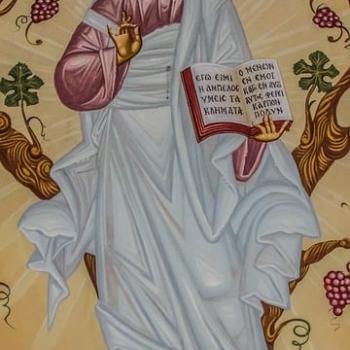
A close reading of Scripture quickly reveals the use of various literary devices such as allegories and parables. For Catholics reading the New Testament, it can sometimes be tempting to echo the apostles in Matthew 13:10, “Why do you speak in parables?” After all, what purpose do these rather strange stories serve? Despite their unusual nature, literary devices have a long history in religious pedagogy, as evidenced by their use in the Bible.
In this essay, I will discuss the various literary devices used in the Bible. I hope to do this by placing these schemes and tropes within the great oral and storytelling tradition that composes Scripture. Before beginning, a quick explanation of some rhetorical terms may be helpful.
A scheme is a construct that deviates from the standard word order, whereas a trope uses a word in a manner different from its standard use. A parable is usually a short story based on a familiar life experience used to teach a spiritual or moral lesson. Parables are similar to both metaphors and allegories.
Placing these literary devices within the greater context of storytelling is essential to comprehend the meaning and use of these figures of speech in the Bible. This is best done by understanding the oral tradition that provides the foundation of Sacred Scripture.
The Hebrew Bible or Old Testament was codified by scribes who put oral traditions and stories into writing. Many scribes belonged to the Levite tribe. The Levites were priests with the time and resources to engage in literary activities. Other scribes, such as the record-keepers, historians, and letter-writers in the royal palaces and administrative centers, were affiliated with the ancient equivalent of professional guilds. (Werrett, Ian. Ritual Purity and the Dead Sea Scrolls. Brill, 2007).
The oral tradition so prominent in ancient times must be connected to the use of storytelling essential to Judaism and the nascent Christian movement of the first century. The importance of the oral tradition is evident within the biblical text itself. For example, the Passover tradition that was borne of the Israelites’ flight from Egypt is predicated on this tradition. “When your children ask you, ‘What does this rite of yours mean?’ You will reply, ‘It is the Passover sacrifice for the Lord, who passed over the houses of the Israelites in Egypt; when he struck down the Egyptians, he delivered our houses.” (Exodus 12:26-27).
The importance placed on oral tradition and storytelling within the Jewish religion is immense and lays the foundation for the use of parables and allegories in the Old Testament. As Rabbi Maya Glasser puts it, “Storytelling is a rich part of the Jewish tradition and continues to be an ongoing, effective way of transmitting a cultural heritage and…sharing values.”
In the Old Testament, one of the more interesting rhetorical devices used is that of personification. Personification occurs when the author attributes human traits and qualities to non-human things. An example of this trope occurs in the Book of Proverbs. There, the author refers to the concept of wisdom as a woman. (See the eighth chapter of the Book of Proverbs).
A prominent parable, known as “The Eagles and the Vine,” appears in the Book of Ezekiel (17:2-10). Reasonably complex, the story is a condemnation of Israel’s (the vine) political dealings with Babylon and Egypt (the two eagles).
Suffice it to say that the oral tradition of Scripture, with its use of figures of speech, allegories, and parables, would have been well established by the time of Christ. Still, Christ’s use of literary devices, in particular, parables, provides excellent insight into the moral and theological domains that would provide the foundation for the burgeoning Catholic Church.
One of the most famous allegories in the New Testament is the Prodigal Son (see Luke 15:11-30). The father represents God, the prodigal son is a representative of sinners, and the elder son is intended to denote the religious authorities of the time.
A poignant and, for Jesus, a personal parable is depicted in Matthew’s Gospel. The story tells of a landlord renting a vineyard to tenants and traveling to another country. At harvest time, the landlord sent servants to collect the fruit owed to him. The tenants beat and even killed the servants to avoid paying what was owed. Eventually, the landlord sent his son, thinking the tenants would respect him. However, the tenants also killed the son. (See Matthew 21:33-46).
In the parable, the tenants are the Jewish elders and religious leaders, God the Father is represented as the landlord, the numerous servants sent by him are the prophets of the Old Testament, and, of course, the landlord’s son is Christ.
All of this leads to the question, why are these literary devices such a prominent part of biblical pedagogy? As indicated earlier, at least part of the answer to that question is the importance of storytelling within the oral tradition of the Bible. Additionally, there are certain rhetorical advantages to their use.
The parables of Christ often employed everyday (in the first century) situations (shepherding, traveling, family relationships, household chores) and people (merchants, widows, religious leaders, farmers, bridesmaids) from His own time and place. The stories would have been meaningful and vivid to his immediate audience.
Despite the colloquial manner of Christ’s parables, their nature is such that they often have meaning that extends well beyond their original time and place. Human nature, being what it is, the stories of the New Testament are influential to many aspects of modern life. The importance of forgiveness, mercy, justice, and the need for God remain as important in our time as they were two thousand years ago.
To read the Catholic Bible is to read a series of seventy-three books written by various authors over some four thousand years. These authors, inspired by the Holy Spirit, used a variety of literary devices and themes to express what God intended to convey. In this essay, I have sought to examine some of the more prominent and common tropes and schemes used in Sacred Scripture.












